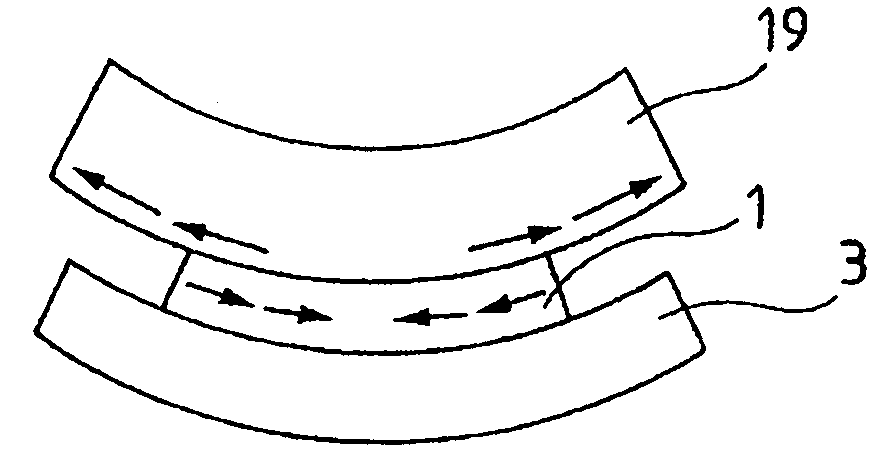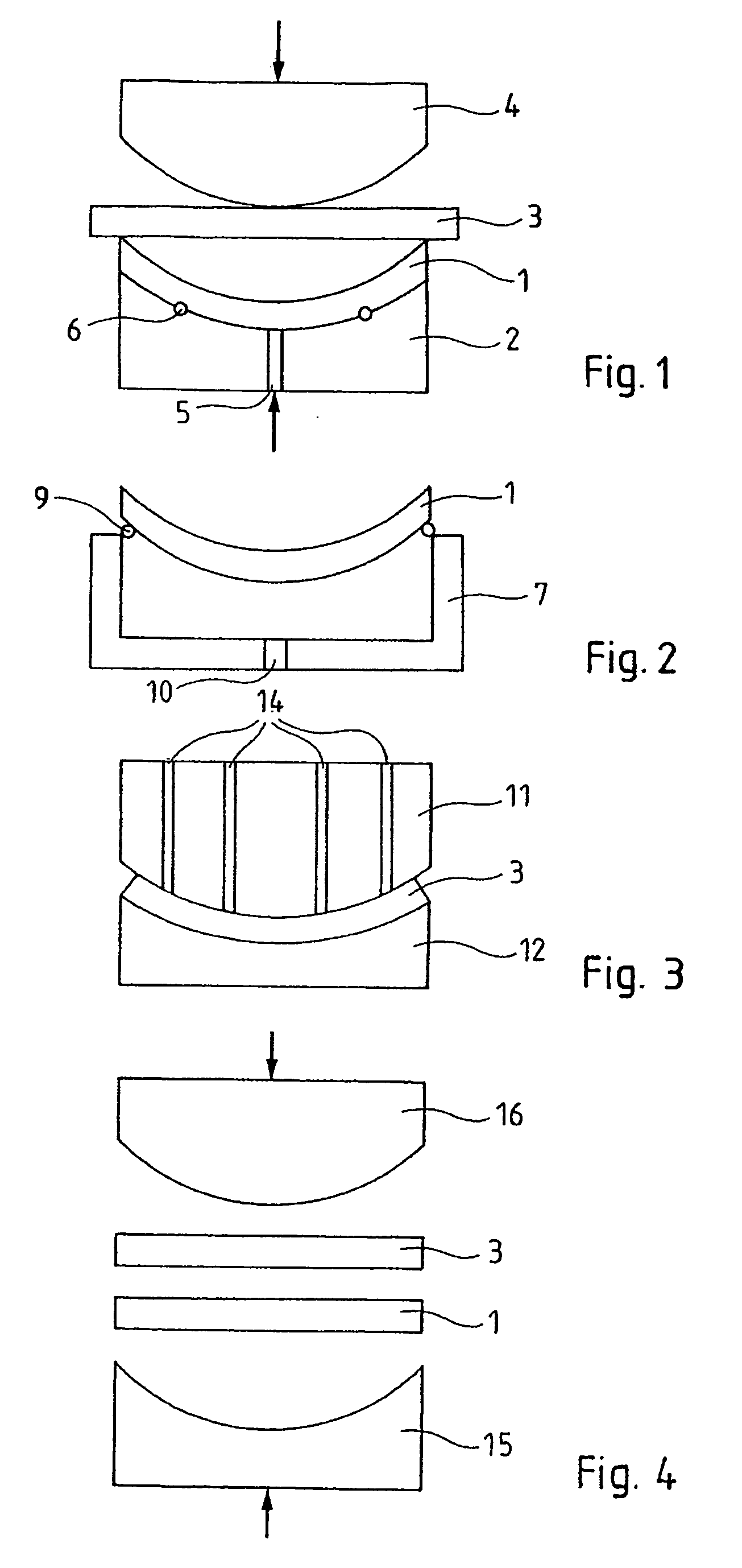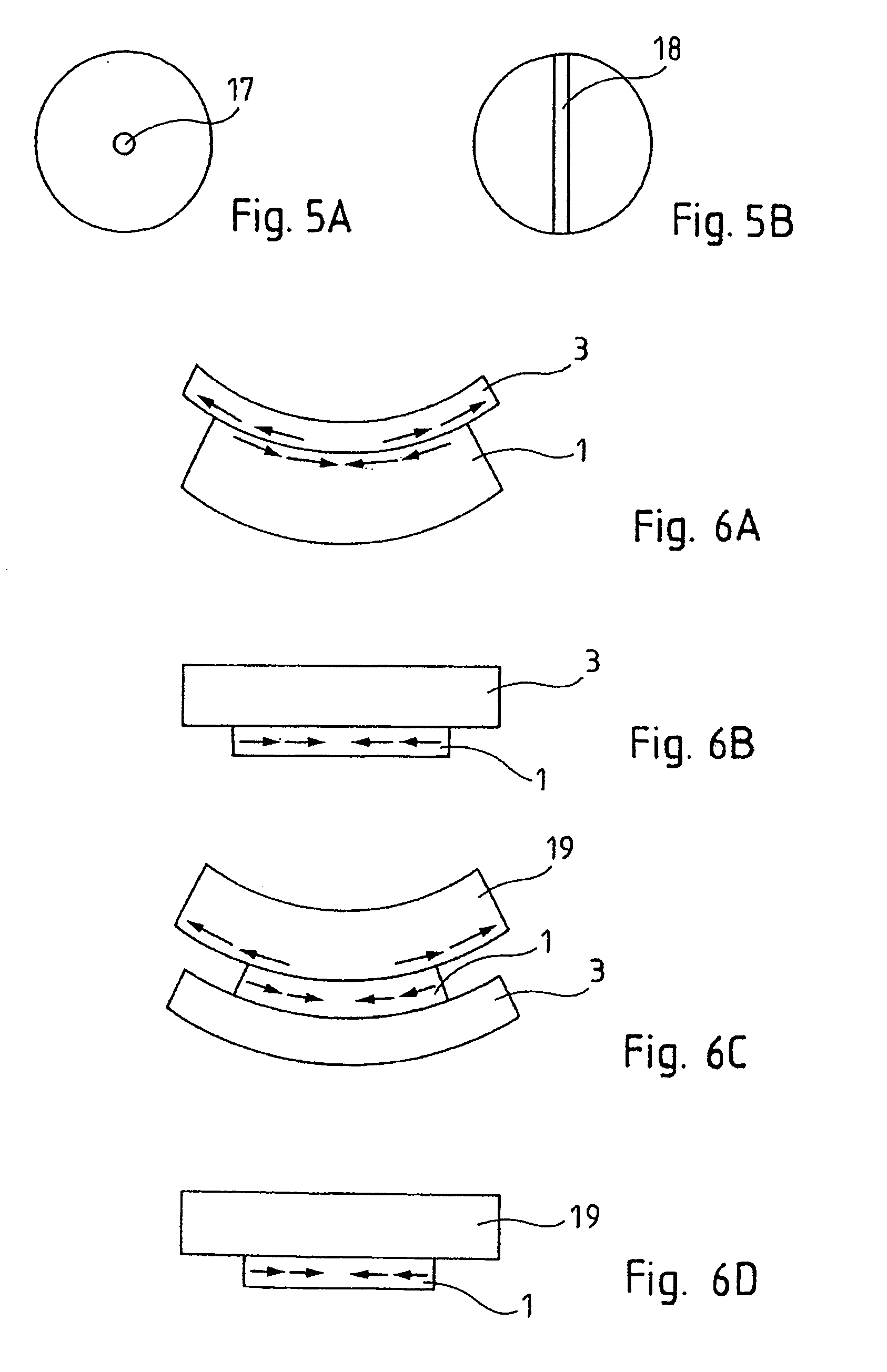Method of producing a complex structure by assembling stressed structures
a stress-strength, complex structure technology, applied in the direction of medical science, application, lamination, etc., can solve the problems of high internal stress within the heterostructure, step changes necessitate large changes in temperature, damage or even destroy the complex structure, etc., to achieve good quality, improve mechanical stability, and control accurately
- Summary
- Abstract
- Description
- Claims
- Application Information
AI Technical Summary
Benefits of technology
Problems solved by technology
Method used
Image
Examples
Embodiment Construction
[0060] Curved Bonding
[0061] In the figures to which the following description refers, identical, similar or equivalent parts are identified by the same reference numbers. Also, to clarify the figures, the various items are not represented to a consistent scale.
[0062]FIG. 1 shows one non-limiting embodiment of the invention. A first basic structure 1 is deformed by aspirating it onto a first preform 2 of specific shape, for example of spherical concave shape. Aspiration is effected by means of aspiration channels 5 opening onto the surface of the preform. Seals 6 at the periphery of the preform support the first structure 1 and ensure a pressure difference is obtained between the two faces of that structure. Because of this pressure difference, the structure is deformed to espouse the shape of the first preform 2. Because of this deformation, stresses familiar to and quantifiable by the person skilled in the art are generated within the first structure 1 and in particular at its ex...
PUM
| Property | Measurement | Unit |
|---|---|---|
| thickness | aaaaa | aaaaa |
| diameter | aaaaa | aaaaa |
| thick | aaaaa | aaaaa |
Abstract
Description
Claims
Application Information
 Login to View More
Login to View More - R&D
- Intellectual Property
- Life Sciences
- Materials
- Tech Scout
- Unparalleled Data Quality
- Higher Quality Content
- 60% Fewer Hallucinations
Browse by: Latest US Patents, China's latest patents, Technical Efficacy Thesaurus, Application Domain, Technology Topic, Popular Technical Reports.
© 2025 PatSnap. All rights reserved.Legal|Privacy policy|Modern Slavery Act Transparency Statement|Sitemap|About US| Contact US: help@patsnap.com



